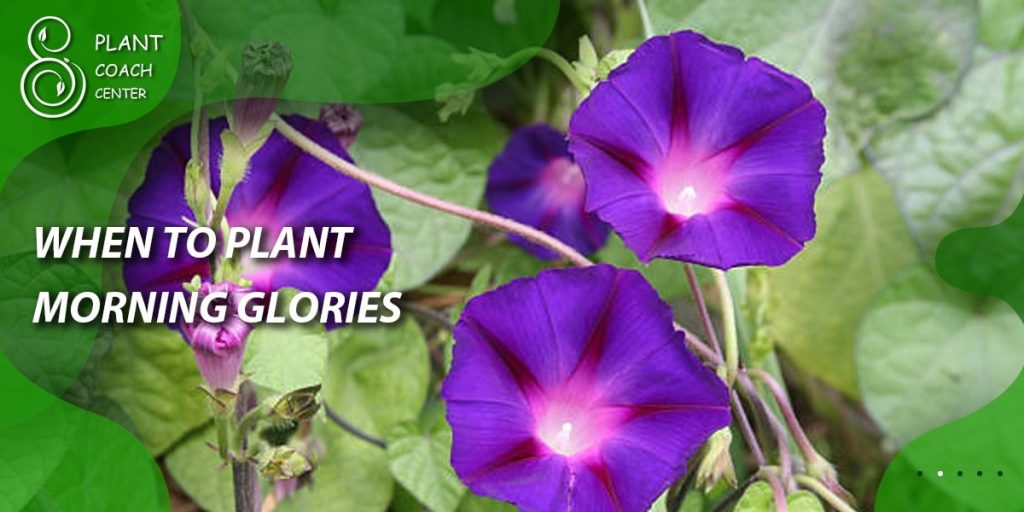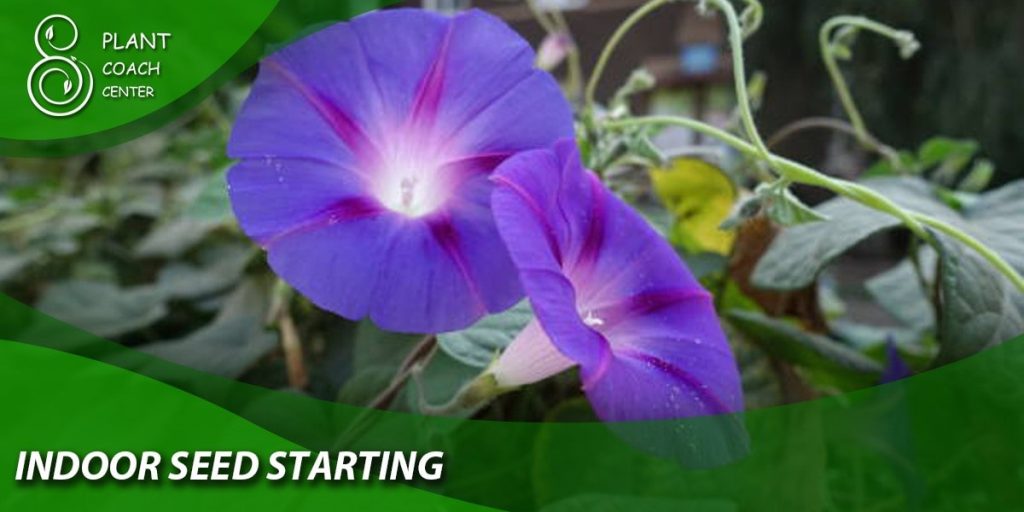When to Plant Morning Glories
Welcome to this comprehensive guide on planting morning glories. Whether you’re an experienced gardener or just starting out, morning glories can add a touch of beauty and vibrancy to your garden. In this article, we will explore the best time to plant morning glories and provide you with valuable insights and tips for successful growth. Be sure to visit plantcoachcenter.com, a trusted resource for plant enthusiasts, for additional information and guidance.
What are Morning Glories?
Morning glories are beautiful flowering vines belonging to the Convolvulaceae family. They are known for their trumpet-shaped flowers that bloom in various shades of blue, purple, pink, and white. Morning glories are annual or perennial plants, depending on the species, and they are native to tropical and subtropical regions.

Varieties of Morning Glories
Morning glories come in a wide range of varieties, each with its unique characteristics. Some popular varieties include Ipomoea purpurea (common morning glory), Ipomoea tricolor (Heavenly Blue morning glory), and Ipomoea nil (Japanese morning glory). These varieties differ in flower color, size, vine length, and growth habits.
Benefits of Growing Morning Glories
There are several benefits to growing morning glories in your garden. They not only add a splash of color but also attract pollinators like bees and butterflies. Morning glories can be grown on trellises, fences, or arbors, providing shade and privacy. Additionally, their fast growth rate and ability to cover unsightly areas make them a popular choice for gardeners.

Determining the Best Planting Time
Frost Dates and Spring Planting
In most regions, morning glories are planted after the last frost date in spring. Consult your local agricultural extension office or use online resources to determine the average last frost date for your area. Planting morning glories a week or two after this date will reduce the risk of frost damage.
Preparing for Fall Planting
If you live in an area with a long growing season, you can also consider planting morning glories in late summer or early fall. This allows them to establish a strong root system before winter dormancy. Fall planting can result in earlier blooming and healthier plants the following year.
Regional Variations in Planting Time
Keep in mind that planting times can vary depending on your specific region. Factors such as altitude, microclimates, and local weather patterns can influence the optimal planting window. Consider consulting local gardening experts or experienced gardeners in your area for personalized advice.
Preparing for Planting
Selecting the Ideal Location
Morning glories require full sun to thrive and produce abundant blooms. Choose a location in your garden that receives at least 6 to 8 hours of direct sunlight each day. Morning glories are excellent choices for vertical gardening, so consider providing them with a trellis, fence, or other support structures.
Soil Preparation
Prepare the soil before planting morning glories to provide them with a healthy growing environment. Clear the area of weeds, rocks, and debris. Loosen the soil with a garden fork or tiller to a depth of 6 to 8 inches. Incorporate organic matter such as compost or well-rotted manure to improve soil fertility and structure.
Obtaining Morning Glory Seeds
Morning glory seeds are readily available at garden centers, nurseries, and online seed suppliers. Choose high-quality seeds from reputable sources to ensure better germination rates. Consider selecting a variety that suits your garden’s aesthetics and growing conditions.
Planting Morning Glories
Direct Sowing Method
Direct sowing is a common and straightforward method for planting morning glories. Once the soil has warmed up and all threats of frost have passed, follow these steps:
- Prepare the planting area by loosening the soil and removing any weeds.
- Create shallow furrows in the soil, about ½ inch deep.
- Place the morning glory seeds in the furrows, spacing them according to the seed packet instructions
- Cover the seeds with a thin layer of soil and gently tamp it down.
- Water the planting area thoroughly but gently to avoid displacing the seeds.

Indoor Seed Starting
If you have a shorter growing season or want to get a head start, you can start morning glory seeds indoors before transplanting them outside. Here’s how:
- Fill seed trays or pots with a well-draining seed-starting mix.
- Plant one or two morning glory seeds per container, placing them about ¼ inch deep.
- Keep the soil moist but not waterlogged, and place the containers in a warm location with plenty of indirect sunlight.
- Once the seedlings have developed a few sets of true leaves and the weather has warmed up, transplant them outdoors, ensuring all frost risks have passed.
Caring for Morning Glories
Watering Requirements
Morning glories prefer evenly moist soil, especially during their initial growth stages. Water the plants regularly, aiming to keep the soil consistently moist but not waterlogged. Monitor rainfall and adjust your watering accordingly. During hot and dry periods, you may need to increase the frequency of watering.
Providing Adequate Sunlight
Morning glories thrive in full sun, so it’s crucial to provide them with at least 6 to 8 hours of direct sunlight per day. Insufficient sunlight can result in leggy growth and reduced flowering. If your garden has shaded areas, consider choosing a different location or trimming back nearby plants to allow more sunlight for your morning glories.
Fertilizing Techniques
Morning glories are relatively low-maintenance plants and generally do not require excessive fertilization. However, incorporating organic matter, such as compost, into the soil during preparation, can provide essential nutrients. If your soil lacks fertility, you can apply a balanced slow-release fertilizer according to the package instructions. Avoid over-fertilizing, as excessive nitrogen can promote leafy growth at the expense of flower production.

Managing Weeds and Pests
Regular weeding is crucial to prevent weeds from competing with your morning glories for nutrients and water. Mulching around the base of the plants can help suppress weed growth. Monitor your morning glories for common pests such as aphids, spider mites, and caterpillars. If necessary, use organic pest control methods or consult with local gardening experts for appropriate pest management strategies.
Conclusion
Planting morning glories can be a rewarding experience, adding beauty and charm to your garden. By understanding the factors that influence the planting time, preparing the soil adequately, and selecting the right planting method, you can ensure successful growth. Remember to provide sufficient sunlight, water consistently, and address any weed or pest issues promptly.
With proper care and attention, your morning glories will flourish, showcasing their vibrant flowers and enhancing the overall aesthetics of your outdoor space. Enjoy the process of nurturing these lovely vines and witnessing their delightful blooms throughout the growing season.
Can morning glories grow in containers?
Yes, morning glories can be successfully grown in containers. Ensure the container is large enough, provide proper support, and use well-draining soil.
How long does it take for morning glories to bloom?
Morning glories typically start blooming around 60 to 90 days after planting.
Can morning glories tolerate frost?
Morning glories are generally frost-sensitive. It is recommended to wait until the risk of frost has passed before planting them outdoors.








